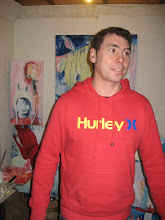THE TRICKSTER AND ARTIST
Natalie Robertson is the Programme Co-coordinator for Maori Art and Design in the Faculty of Maori Development at A.U.T. She is an artist and art commentator.
Maui is a mythical Maori character. He is a demi-god, very cheeky and devious. He is able to move between the earthly and celestial realms. Maui is able to transform into animals. Journeys are central to stories involving Maui. Maui is probably most famous for fishing up the North Island with his Grandmothers jawbone.
The Trickster appears in most cultures across the world. Maui is a well known across the Pacific. The predicaments of the Trickster are surprisingly familiar. He is always moving the goal –posts and boundary markers.
Robertson is interested in the relationship between the Trickster and art, “These Tricksters demonstrate a kind of attitude that I think contemporary artists can learn from”, (Robertson p20). The Trickster is an observer and draws our attention to things we haven’t noticed. This is a role that art can play. Art is able to de-familiarize us, to draw us in with something that we feel comfortable with. Then pose questions through the unexpected. An example of this is Magic Realism, “a form founded on the juxtaposition of two forms of representation which normally exist in opposition”, (1). The term was originally “used to describe art that portrayed scenes of fantasy and imagination through the use of clear-cut ‘documentary’ painting techniques”, (2).”
Roberson draws our attention to “the Trickster escapades that ‘mock foolish obsessive behavior’”, (Robertson 26). In this role the Trickster is like the Jester or Clown. He is to be laughed at through satire, pointing out flaws and absurdities. This is a useful position for the artist to take. The artist can then break down barriers between the viewer and the work. Rather than assume authority the artist can allow the work to raise questions for the viewer.
Robertson, “The 10 predicaments of Maui: Notes on Tricksters”, Brian Butler ed., Volume 1, Auckland: Artspace and Clouds, 2008, pp. 16-28.
1. The Routledge Companion to Postmodernism, ed. Stuart Sim, London, Routledge, 1999, pp. 310-311
2. The Routledge Companion to Postmodernism, ed. Stuart Sim, London, Routledge, 1999, pp. 310-311
Subscribe to:
Post Comments (Atom)


No comments:
Post a Comment